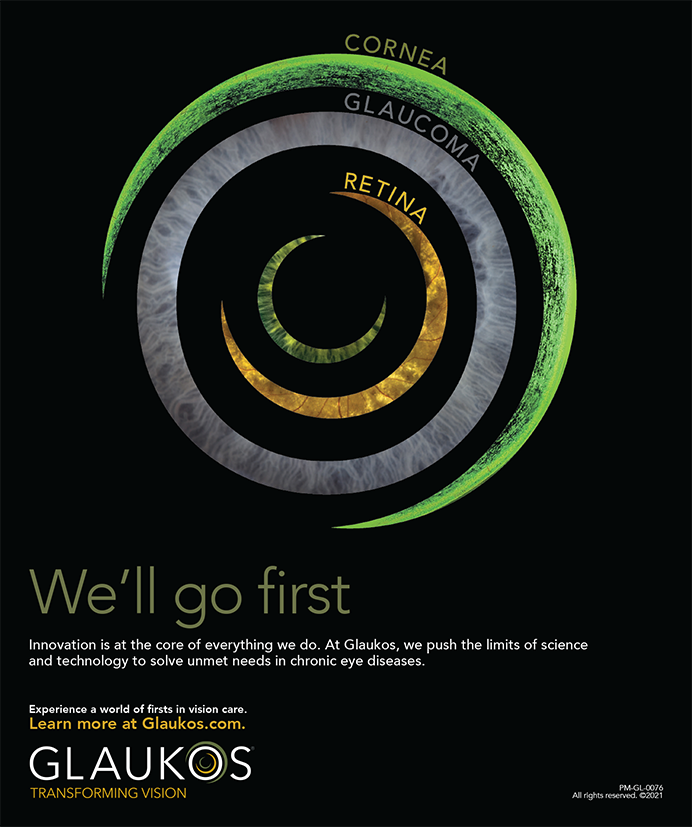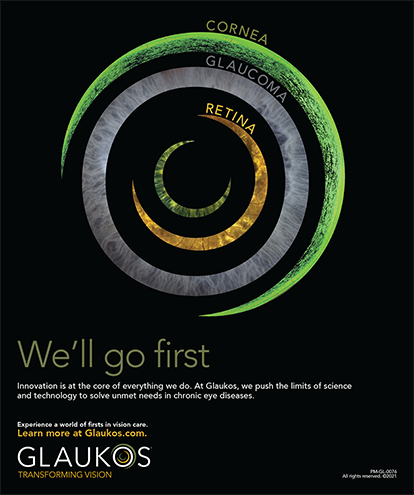Since they were first investigated, premium IOLs have represented great hope to the ophthalmic industry. After Medicare cleared the path for surgeons to unbundle this offering from the cataract procedure, allowing them to charge for elective noncovered services, a rapid adoption of the technology was expected. Instead, the rate of growth of these IOLs has been relatively slow.
The opportunity that premium lenses represent may be the closest thing to a near-perfect scenario to positively affect ophthalmology now and—if a broad enough foundation is built—for the next 20 years. Factors contributing to this ideal situation are the aging baby boomer population, its members' increased expectations for visual acuity outcomes (spectacle independence), the capable hands of surgeons employing advanced implants and refractive surgical capabilities, and augmented technology that better delivers on higher expectations.
Yet, for many complicated reasons, the adoption of this technology remains lower than forecasted, leaving many to wonder why. The answer exists in several complex barriers, but for the sake of discussion, herein I outline three major concerns that I have heard stated in one form or another during the past few years. Each barrier is spoken in the voice of a practice manager or surgeon and articulates his or her actual feelings during the lifespan of this offering. The voices indicate the reality of the concern and the potential misconception attached to the thinking. The final voice addresses some of the concerns.
Voice No. 1.
“I tried them back in 2006. They do not work.”
The truth behind this sentiment is that many technologies
get better with time. A rare few are fully optimized
right out of the gate, and the lenses available 5
or 6 years ago were no exception. The implants available
today are inarguably better but still imperfect. The
lenses in this category have some things in common:
they were each the most advanced option available at
the time of their release. Some implants may sacrifice
near vision for clarity at distance and the minimization
of glare and halos at night. Others lenses may be
superior for near vision but sacrifice distance acuity and
nighttime image quality. All, however, represent a huge
advance in IOL technology. They also represent eye care
specialists' ability to discuss something with patients
they never could before: the hope and potential for
spectacle freedom for the performance of distance,
intermediate, and near tasks. Advances and limited
capabilities aside, the potential, once communicated
properly to patients, is simply incredible.
Voice No. 2.
“The chair time is not worth the money.”
The financial ramifications associated with adopting
and procuring technology are very real. True, there
is certainly more chair time associated with premium
lenses. It takes time to counsel, educate, and articulate
the many things these various lenses will and will
not do. On one hand, it may be simpler to look at the
effort required and decide to stick with the status quo
and the current workflow for the practice. But, a better
view of the entire program offered by the practice
is needed before judgment. Practice managers and
surgeons should perform a review of pricing strategies
to determine if the charges being rendered in conjunction
with the premium implant are appropriate for the
work performed. In many practices, noncovered charges
are inconsistent between the premium IOL program
and the existing laser vision correction offerings.
To be clear, it is not suggested that practices charge for the extra time required, but instead for the extra work performed during the process. The initial ruling published in 2005 by the Centers for Medicare & Medicaid Services provides a clear pathway to charge for these noncovered services. Before determining whether it is worth the time and energy, practice managers and surgeons should reflect on their other refractive offerings. Was laser vision correction a loss leader for the practice? Was the chair time worth the money for this nonlens-based surgery? Few practitioners regret offering laser vision correction. In fact, most state that, if they could perform more procedures, they would. A simple parallel can be drawn between the charges for the workup in laser vision correction and those associated with premium lenses. Will the patient need a laser enhancement after cataract surgery? Will he or she need an Nd:YAG capsulotomy? The answers to these questions will help determine if a price has been correctly constructed. Pricing the offering commensurate with the work involved will reduce the likelihood that practices view the procedure as a financial burden.
Voice No. 3.
“I would pay money for someone to not have
a premium IOL.”
This sentiment is wrought with, if nothing else, risk.
True, performing cataract surgery using these lenses
opens the door to more time, more testing, and more
attention paid to the refractive outcome. But, there
are latent costs associated with the line voiced here.
For example, how might patients react when their colleagues
and friends return from cataract surgeries with
an implant option that was never communicated to
them personally? Although every practice may not offer
this technology in the future, I believe that all specialists
should educate patients about all of the options
prior to surgery. A patient undergoing a procedure
needs to understand the benefits and risks associated
with the recommended and alternative methods to
correct his or her vision. This may mean the ophthalmologist
should refer a patient who desires a premium
lens to another provider. This option is better than
having the patient return to the practice and state that
he or she was not informed of all the available options.
Many practitioners say that their patient population
is “special,” socioeconomically or demographically.
These reasons only reinforce the need to educate and
document the conversation about the surgical options.
Patients going through the cataract surgery process
deserve to learn about all of their alternatives, regardless
of their age or their perceived income.
Voice No. 4.
“Success is up to the surgeon.”
According to Vance Thompson, MD, founder of
Vance Thompson Vision in Sioux Falls, South Dakota,
the surgeon plays a major role in patients' satisfaction
with premium lenses. “The key is that, no matter
whether an implant is optimized at plano or +25.00 D
or -0.75 D, the surgeon should not quit until that specific
refractive error is achieved,” he said. “Paying close
attention to residual refractive error, dry eye disease,
and subtle posterior capsular haze are all critical for the
patient's joy regarding their outcome. Once the patient experiences joy, the technology sells itself. For example,
practitioners do not refract spectacles to slightly off
plano; they try to achieve the best possible distance
vision through the top and the bottom. If we surgeons
are going to make patients that happy without
glasses, we have to determine the refractive goal for the
implant, show the patient that goal in the examination
lane, make any necessary adjustments to obtain that
patient's ultimate best vision, and then follow through
with a refractive enhancement or two (rarely three)
to make that patient happy. We as surgeons have to
finish. It is not the implant's fault if we leave patients
with residual refractive error and they are not happy. In
refractive cataract surgery, we do well on the cataract
part but sometimes underperform on the refractive
side. For these implants to achieve the functional vision
for patients that they are capable of, the lenses must
be in an eye that has the refractive endpoint they were
designed for.”
CONCLUSION
The first three of these voices represent reasons many practices have remained on the sidelines in terms of offering premium IOLs. One more reason that practices are not performing more premium implants is simply that eye care specialists are not recommending them. Patients are in the provider's office for his or her professional opinion. Patients want to know that the surgeon believes their cloudy vision is operable. They want to know that the expert has the latest options for their specific vision needs, and they want to hear a recommendation for their specific condition. Eye care providers must tell patients what is the best option for their vision. There is no substitute for a doctor who makes a strong recommendation.
Matt Jensen, MBA, is the executive director of Vance Thompson Vision in Sioux Falls, South Dakota, and is a certified Experience Economy expert. Mr. Jensen may be reached at (605) 328-3903; matt.jensen@sanfordhealth.org




